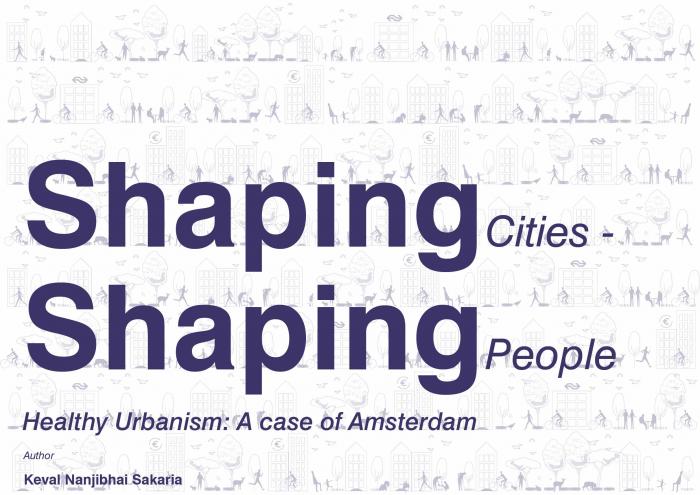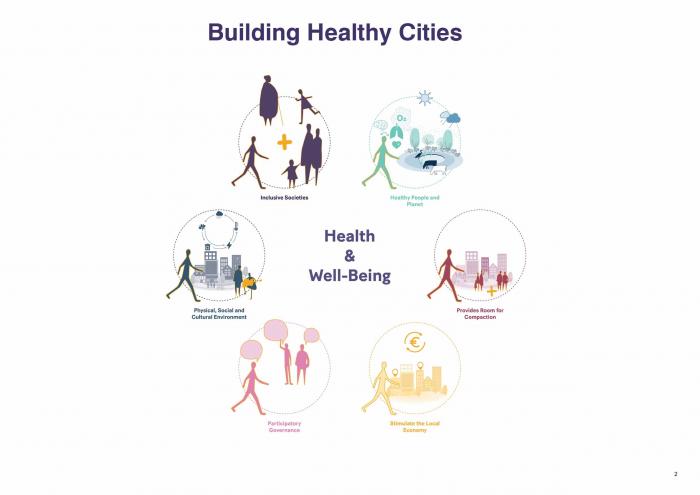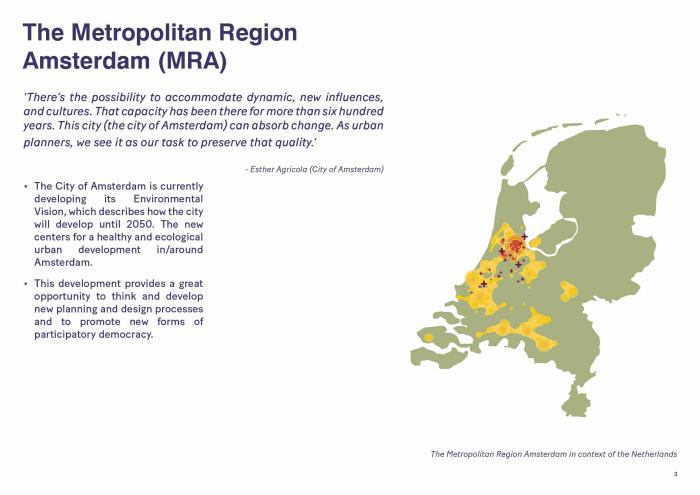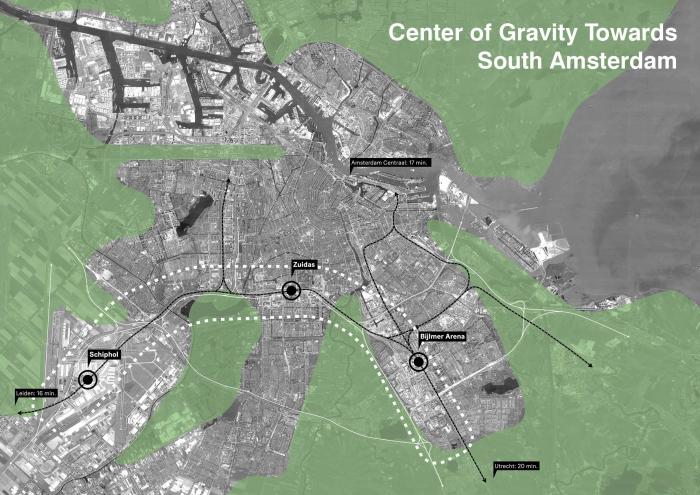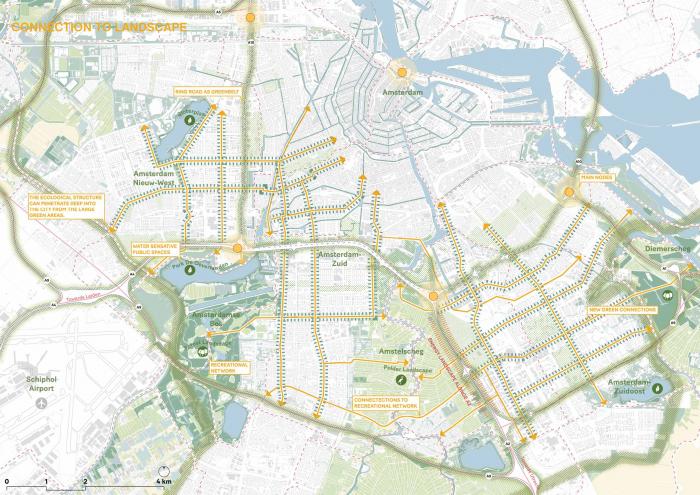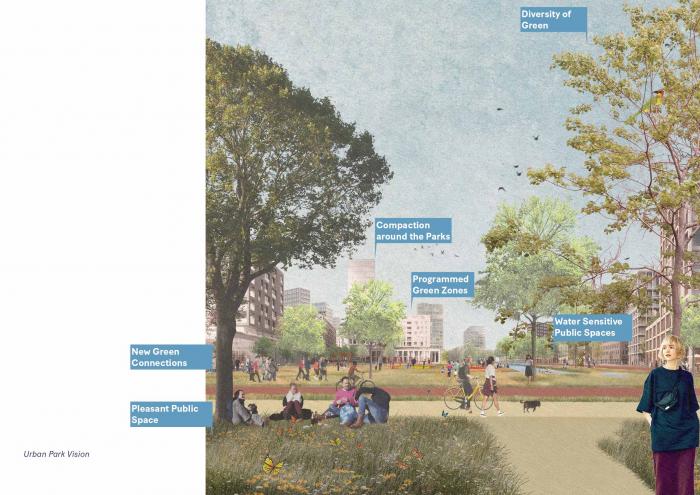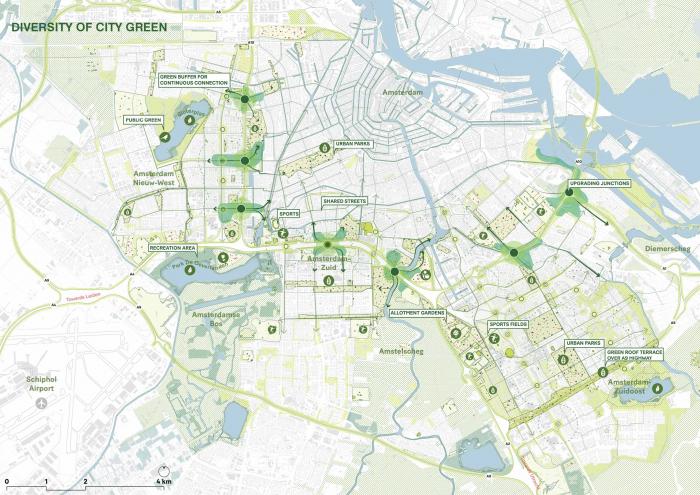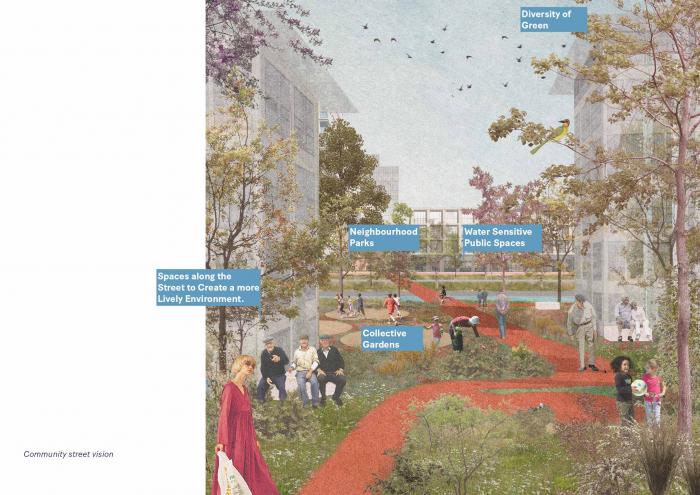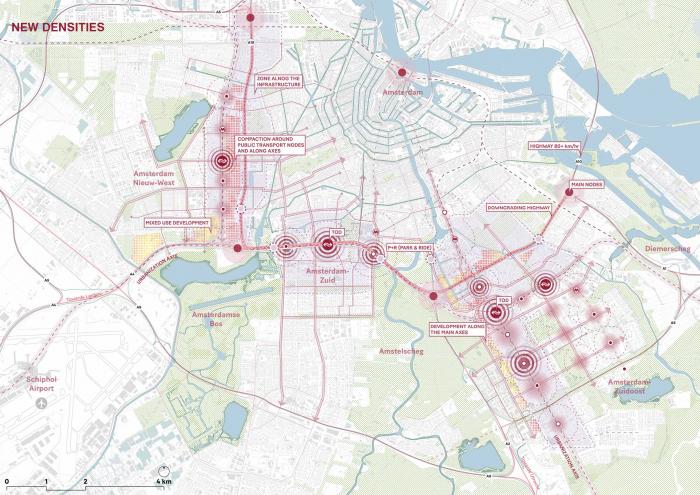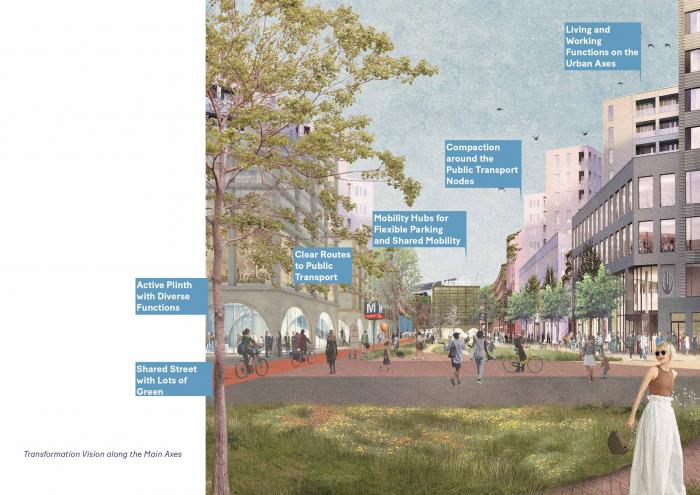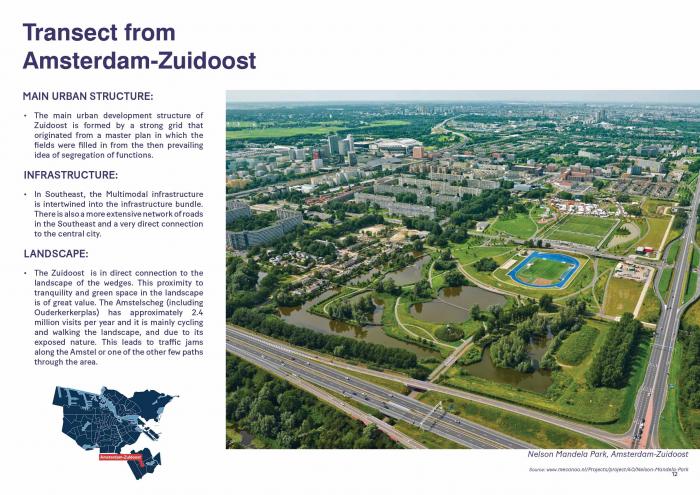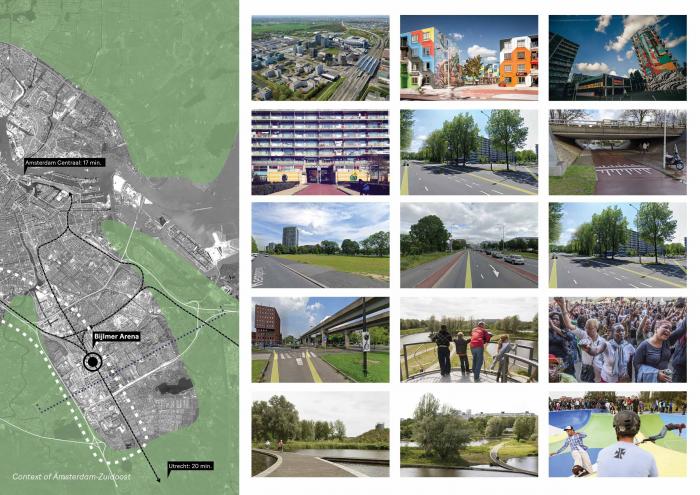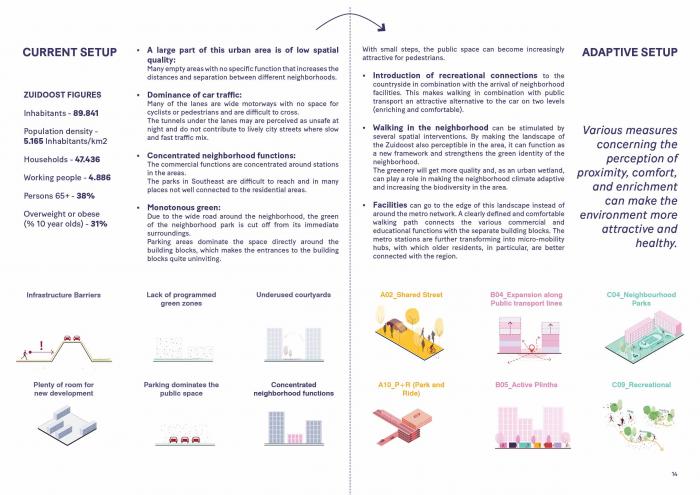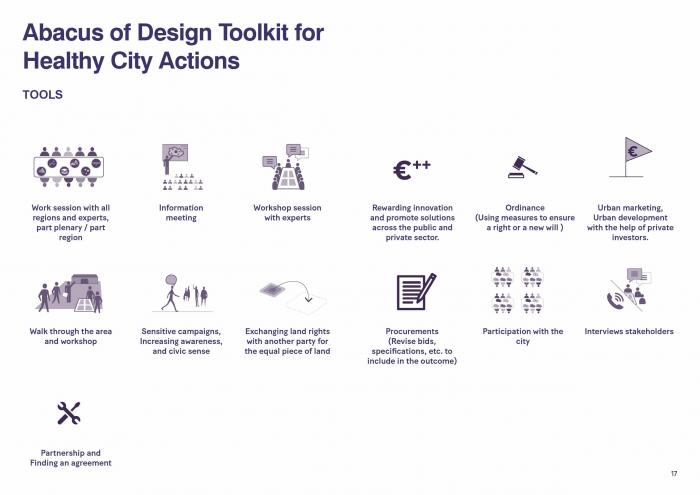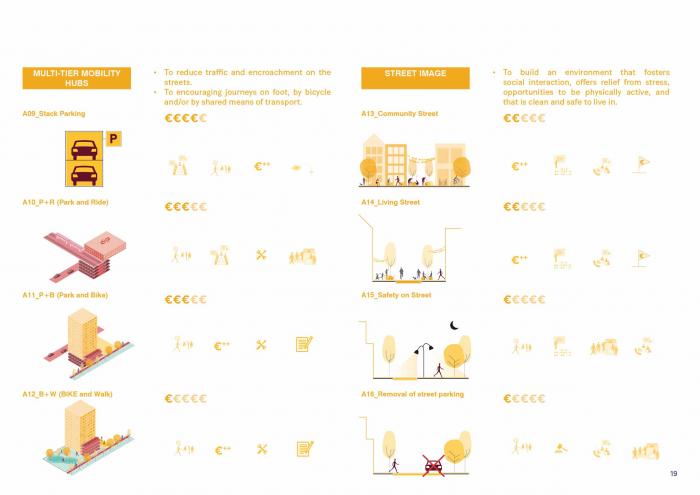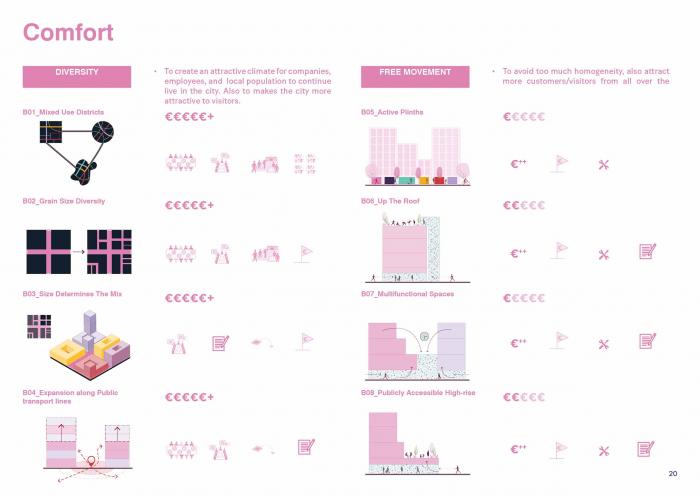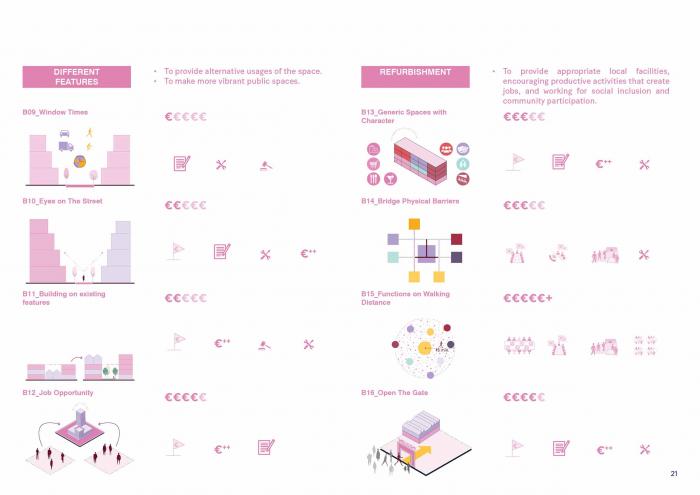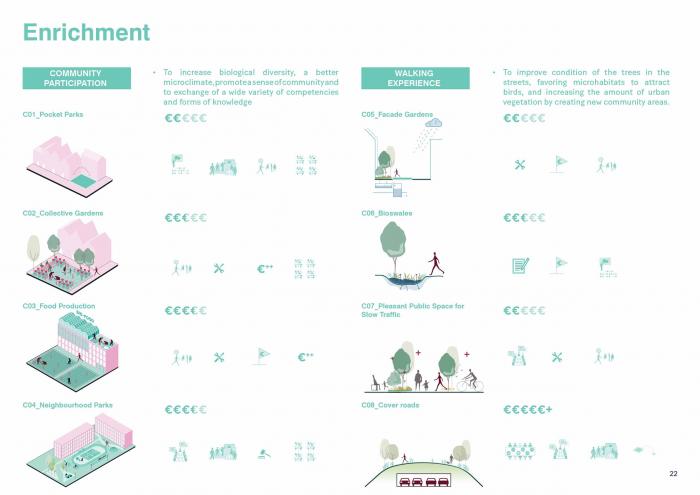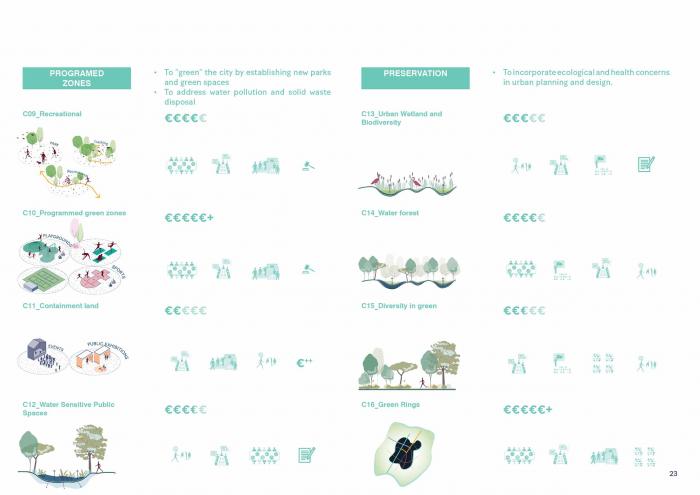I. SUMMARY INFORMATION
Project
269780
Status
Submitted
Award category
Reinvented places to meet and share
You want to submit
NEW EUROPEAN BAUHAUS RISING STARS : concepts or ideas submitted by young talents (aged 30 or less)
Project title
Shaping Cities- Shaping People
Full concept/idea title
Healthy Urbanism: A case of Amsterdam
Description
Today’s biggest challenges such as the climate crisis, Covid-19, and political disorder all challenging the ideals of globalism requires a fundamental shift, in understanding the meaning and form of healthy urban environments. We need to refashion cities as places that foster social interaction and participation, offer relief from stress, the ability to reach all daily facilities in a short distance, and opportunities to be physically active with an environment that is clean and safe to live in.
Where is your concept/idea being developed or intended to be implemented in the EU?
Netherlands
Amsterdam Metropolitan Area
Amsterdam-Zuidoost
Bijlmermeer
020
II. DESCRIPTION OF THE PROJECT
Please provide a summary of your concept/ idea
The city is made up of different materials and it is constantly crossed by a multitude of flows like water, energies, goods, people, data, etc. It is essential to integrate people as the main resource in territorial development. The way that cities are designed and managed affects people’s health and wellbeing in many ways. Today’s biggest challenges such as the climate crisis and widening inequalities require a fundamental shift, in understanding the meaning and form of healthy urban environments. It is important to include policies and decisions that support population health, now and into the future.
While depression, mental illness, as well as loneliness continue to rise medical solutions are just not enough to tackle these issues as these are heavily influenced by the environments we live, work and play in. The health and well-being of a community depend on personal health and lifestyle, social context, and the spatial context we live in; we need to think about a clean and safe environment, proximity to the services, access to affordable living, co-creating community spaces, inclusiveness, fostering different ecologies, and healthy food supplies.
The City of Amsterdam is currently developing its Environmental Vision, which describes how the city will develop until 2050. This development will promote new centers for healthy and ecological urban development in/around Amsterdam. In the coming thirty years the center of gravity will shift from ‘City-Expansion’ towards the south of the city. This development provides a great opportunity to think and develop new planning and design processes and to promote new forms of participatory democracy.
This work on Shaping Cities- Shaping People focuses on “Healthy Urbanism” as a new paradigm, in which new kinds of synergies can be considered in a contemporary way. The work elaborates this concept by providing different strategies and future visions for a specific area in the south part of Amsterdam.
Please give information about the key objectives of your concept/idea in terms of sustainability and how these would be met
Amsterdam has a diverse economy, housing stock, facilities, landscapes, and above all: a diverse and relatively young population. Amsterdam thus has a perfect breeding ground to retain and attract promising economic sectors and to allow the local and regional economy to flourish.
To be socially sustainable, a strong social-spatial structure with flexibility for the future is important. Intensification of land use in the city can offer many people living and working space. It means extra support for facilities, extra investments in public space, more efficient use of energy and transport, and less landscape has to be affected.
To have a healthy urban environment, we need to make intensive care for the living environment in the city and must anticipate climate change. By making the air, soil, and water cleaner, we make the city greener, quieter, and more energy-efficient; we optimize the use of scarce land and we switch to renewable energy sources.
The greenery and water in and around the city must become more assessable and attractive to the people of Amsterdam, as their use is increasing and they play an increasingly important role in the health and well-being of the residents. In the future, Amsterdam will be able to profile itself even better with its green and blue image. This means redesigning the ends of the wedges, constructing marinas and swimming spots, investing in existing parks in the city, enlarging the main green structure, and improving and making the water structure more visible. Places that allow the possibility to build recreational facilities (to support the experience of greenery) and the improvement of recreational routes between green areas and blue areas.
A healthy city benefits economic vitality also. It helps to create an attractive climate for companies and employees, ensures that families can continue to live in the city, and makes the city attractive to visitors.
Please give information about the key objectives of your concept/idea in terms of aesthetics and quality of experience beyond functionality and how these would be met
Healthy cities are places that deliver healthy people and the planet, so a healthy city begins with healthy residents. The environment we live in can directly (e.g., the air we breathe) and indirectly (through behavior) influences our health.
Our daily choices are defined by the space we live in. For example, well-developed bicycle infrastructure makes us choose a bike rather than a car, be more physically active, and therefore have a lower risk of diabetes, stroke, breast and colon cancer, and even depression. It works the other way as well. Our choices, e.g., cycling, influence the environment. Active mobility requires less space and therefore it can be given to greenery and water, places to meet. And the last but not least, reduced car use (even electric cars still produce PM2.5, PM10), lowers air pollution which directly lowers the number of cases of respiratory diseases.
Introduction of recreational connections to the countryside in combination with the arrival of neighborhood facilities. This makes walking in combination with public transport an attractive alternative to the car on two levels (enriching and comfortable).
Walking in the neighborhood can be stimulated by several spatial interventions. By making the landscape perceptible in the area, it can function as a new framework and strengthens the green identity of the neighborhood. The greenery will get more quality and, as an urban wetland, can play a role in making the neighborhood climate adaptive and increasing the biodiversity in the area.
Facilities can go to the edge of this landscape instead of around the metro network. A clearly defined and comfortable walking path connects the various commercial and educational functions with separate building blocks. The metro stations are further transforming into micro-mobility hubs, with which older residents, in particular, are better connected with the region.
Please give information about the key objectives of your concept/idea in terms of inclusion and how these would be been met
Where the Amsterdam city center is bursting at the seams, there is sufficient space in the southern part to accommodate a large part of the urbanization task. The possibility of mixed urban environments in these areas contributes to the appeal and success of these locations. There is room for diversity in employment, housing, facilities, and green areas, with strong relationships with adjacent landscapes.
The shift in the urban center of gravity is expected to continue. Also, the international appeal of the various business environments on the south side of Amsterdam makes a major contribution to the international competitive position of the region.
The entire axis (with the extension of the north-south line as part of this variant) is provided with extremely good multimodal accessibility with the presence of Schiphol airport (international) and a heavy parallel connection between motorway and train (national and regional) and metro (urban).
The residents in the southern parts of Amsterdam also contribute to the development potential of this area. Population projections for the coming decades are higher here than in the rest of the city. Moreover, the inhabitants are relatively young and very diverse (almost half have a non-Western background). The number of starting entrepreneurs is also greater than in the rest of the city.
Urbanization can be used to utilize the potential of these young, diverse, and ambitious residents by adding the right homes, workplaces, and meeting places.
The combination of these characteristics is optimally suitable for the development of a healthier living and working environment.
Please explain the innovative character of your concept/ idea
This work focuses on “Healthy Urbanism” and shaping the idea of healthy city development. To elaborates on the concept of health and healthy cities three different strategies related to connecting landscapes, connecting and developing nearby green, and adding new future densities were developed in the context of Amsterdam South.
Each layer proposes strategic development that respects and builds on the unique qualities of the area: living in a wide, green environment with optimal accessibility.
The strategic proposal adds new qualities to upgrading the green space, more attention for cyclists and pedestrians, the development of new streets were living, meeting, and urban economies are concentrated.
This combination of more landscape and more city shapes the healthy vision for the new kind of urbanity, in which space is found for a large number of new residents and employees and contributes to sustainability and inclusiveness.
Followed by these strategies, a transect from Amsterdam-Zuidoost (Amsterdam Southeast) is developed that highlights some of the main issues of the location and providing integrative solutions and future visions. At the end of the work, a general toolkit of design solutions is produced, which can have far-reaching implications and can guide the implementation of the concept.
Please detail the plans you have for the further development, promotion and/or implementation of your concept/idea, with a particular attention to the initiatives to be taken before May 2022
Cities around the world have been working on developing new ideas and visions to improve health and well-being for the betterment of the citizens. Based on the learnings from these diverse cases, an abacus of design toolkit for healthy city actions in three different categories is generated (with far-reaching implications) which can guide the transitions of the city towards a healthier future. Each category has actions based on the underlying principles that provide basic economic assessment and tools of implementation (* this work can differ based on the specificity of the different projects).
A wide range of actions can be considered in the pursuit of promoting/implementing the concept of Healthy urban development in the case of Amsterdam Southeast (taking into consideration the initiative taken before May 2022),
1. The encouragement of community activism by information meeting and workshops
· To decentralization of decision making and services
· To ensure not just community involvement but community management of local health city projects and a particular effort to involve children—tomorrow’s citizens
2. Interviews of stakeholders to exchange the ideas and concerns of the local population
3. Sensitive campaigns to increasing awareness and civic sense
These initiatives can provide insights for the future work session with all regional experts and municipal authorities which can help in planning and projecting the long-term goals. Also to build partnership and finding an agreement with public/private bodies.
III. UPLOAD PICTURES
IV. VALIDATION
By ticking this box, you declare that all the information provided in this form is factually correct, that the proposed concept/idea has not been proposed for the New European Bauhaus Rising Stars Awards more than once in the same category.
Yes
